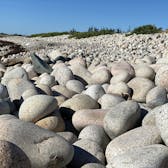Of World Records, Fastest Known Time (FKT) and Strava Segments
By: Jim Burnett
The human infatuation with setting records goes back millennia. The first Guinness Book of Records was published in 1955 and the modern Olympic Games were held in 1896, but these games were preceded by the first recorded Games in 776 B.C. and it is believed that the unrecorded version goes back at least 500 years before that. But a record, particularly a world record, is not a valid and true record until it’s verified by some well established governing body like the International Olympic Committee (IOC), Association of International Marathons and Distance Races or the International Association of Athletics Federation (IAAF).
To set a world record in the marathon you must have a history of previous fast marathon times on certified courses, i.e. you must be known and established, and when you run your world record time it must be on a certified and sanctioned course that meets a number of standards. Among these is that the course “drop” not exceed 1 meter per kilometer and that the as-the-crow-flies distance between the start and finish points is less than 50% of the course length. The “drop” restriction is for obvious reasons, while the point-to-point course restriction is to prevent wind advantage. Think — 2011 Boston Marathon, 35 mph tailwind and Geoffrey Mutai ran 2:03:02, 57 seconds faster than the world record at the time only to have his effort tagged as World’s “Best Time” and not an official world record. (I ran in that race and remember being violently shoved forward into the dark of early morning by gusts, accelerated as they were squeezed between skyscrapers, approaching 50 mph as I walked from the car garage at Copley Square to the shuttle bus pickup at the Boston Common.)
Enter Fastest Known Time (FKT) —The explosion of popularity of trail running around the world and ultra-marathons like the Western States 100, in the past 25 years has begged for a less formalized set of standards for record setting for months-long off-road adventures. For one thing it’s impossible to accurately measure a 10K+/- course over rocks and roots and mountain tops, let alone a 100 mile race. The solution was to keep track of the Fastest Known Time (FKT) for through hikes on known trails, like the Appalachian Trail (AT) and Pacific Crest Trail (PCT). The FKT website was developed for this purpose. Anyone wanting to challenge a FKT may do so after signing in to the FKT website and jumping through a series of hoops. After recording your effort using a special GPS beacon tracker and submitting it and time-stamped pictures and a detailed log of your journey, your time is verified, or not, by FKT. You could attempt to set a record for the AT from Georgia to Maine or Maine to Georgia. You could shoot for the supported, self-supported or unsupported record. The world map above is an interactive map from the FKT website where red dots represent the trail races for which there are FKTs.
This is all well and good but what if the average “Josie”, who would love to set a world record or FKT, but more practically, wants to become Queen of the Mountain (QOM) on foot or by bike for a local half-mile hill road or trail? That’s where Strava and Strava segments come in.
Wikipedia tells us that Strava is an internet service for tracking human exercise which incorporates social network features. Strava is mostly used by cyclists and runners by uploading GPS tracking data. Times over specific GPS tracks can be compared times of other participants over the same Strava segment. So, Josie can just turn on her running watch and get after that half-mile uphill pitch from, say, Canaan Center to the Old North Church at the top (see map above), then post her data on Strava using the Strava app on her phone. Not all routes are Strava segments, but Josie discovered this segment using the Segment Explorer function on the app before she gave that half-mile challenge a go. She can get her results as soon as her effort is posted. If she is speedy, she may get a QOM crown icon next to her data results identifying her as the Fastest of All Time for the half-mile segment or she may be notified that she finished third fastest for the day or second fastest in her age group. Fun.
During these crazy times of the COVID-19 pandemic, good old fashioned foot races on roads and trails have been cancelled or morphed into virtual events. Personally, I have been disappointed with virtual racing but find Strava segments can really inspire you and get your heart pumping in real time. I end up pushing hard to get to the top of a climb ahead of my peers and other UVRC runners just like in a road race. Currently, the UVRC Strava club has 381 members. Strava also compares your segment time with your own previous efforts. So, if you would rather just compete against yourself and measure your own personal progress, you can do that too. I have noticed an uptick in Strava posts by UVRC recently as we look for challenges to replace the fun of local and regional racing events. Go get ‘em!








